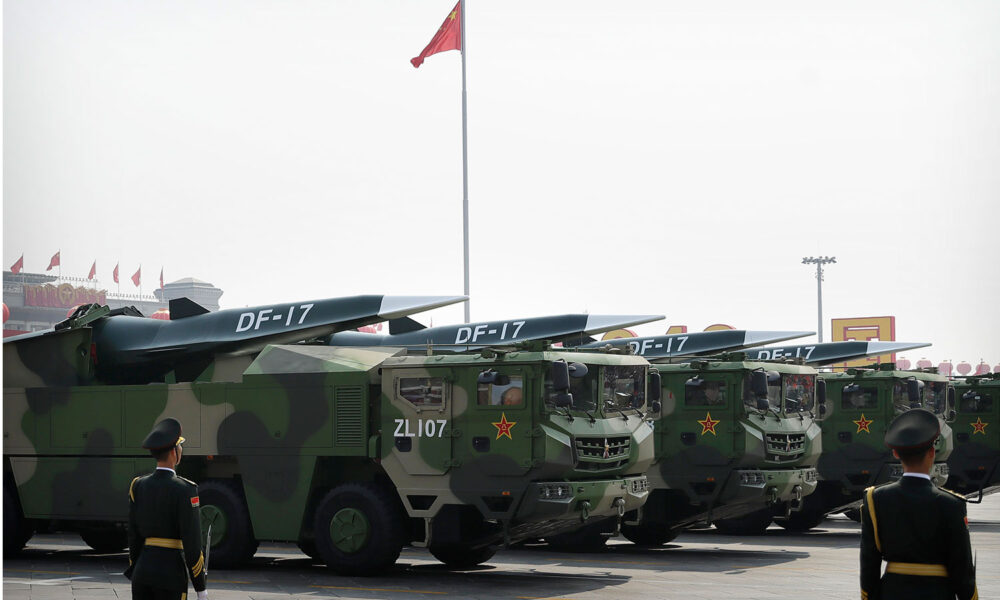This past weekend, the Financial Times reported that China recently tested a new nuclear-capable, long-range missile. China’s Foreign Ministry argued that the system was merely a reusable spacecraft, but that claim appears questionable. This uncertainty stems in part from the unusual nature of the technology demonstrated in this test, which flew a trajectory far different from that of common ballistic missiles.
This story prompted the usual cries of alarm about China’s nuclear weapons program, with some analysts and policymakers mistakenly characterizing it as a “Sputnik moment.” This refers to the Soviet Union’s 1957 launch of the world’s first artificial satellite, which supposedly revealed Soviet technical capabilities far beyond what US analysts had predicted. Just as the Sputnik launch was less of a surprise to the US intelligence community than is commonly thought, this Chinese missile test is far from a game-changer, and is not even particularly surprising. A careful assessment of the test indicates that it was nothing more than a demonstration of old technologies that would offer China little in the way of new military capabilities.
Everything old is new again
The Chinese test reportedly involved the combination of two technologies for the delivery of explosive warheads: a fractional orbital bombardment system (FOBS) paired with a hypersonic glide vehicle (HGV). Despite these dauntingly complicated names, the concepts behind both technologies are simple.
A FOBS involves launching of a delivery vehicle into orbit around Earth, where it can travel unpowered over an essentially limitless range. Once the orbiting vehicle approaches its target, a small engine pushes it out of orbit and towards Earth’s surface.
After dropping out of orbit, rather than falling towards Earth’s surface like a typical FOBS, the Chinese system reportedly glided towards its target using a HGV. These vehicles generate lift as they fly, maneuvering through the atmosphere before diving down to the ground.
While these systems may sound like futuristic technologies, both are actually quite old. The Soviet Union deployed a FOBS in the late 1960s to counter proposed US missile defenses, but later abandoned this system when those US defenses failed to materialize. Similarly, the first design for an HGV dates to the late 1930s. This was followed by extensive development of hypersonic vehicles by the US in the 1960s, including investment of over $5 billion (in current-year dollars) in the ill-fated Boeing X-20 Dyna-Soar, which was cancelled after the US failed to identify any practical use for it.
China’s interest in these technologies should have come as no surprise, given that it had already been publicly acknowledged. Chinese engineers have published work on FOBS technologies in the open literature, and the US Air Force Secretary spoke openly of Chinese FOBS capabilities last September. When it comes to HGVs, the evidence could not have been clearer. China publicly displayed their operational Dongfeng-17 hypersonic boost-glide missile in a 2019 military parade.
In short, the combination of a FOBS with a HGV is intriguing, but hardly shocking. China’s testing of these two widely-known, half-century-old technologies is far from a “Sputnik moment.”
Strategic redundancy
Still, what matters is not the age of the technology, but its utility. As the celebrated physicist Richard Garwin noted, “military capability may be increased as much by old as by new technology.” The question is this: do these old technologies offer China new capabilities?
FOBSs and HGVs could bypass missile defenses of the sort that the US has been developing for decades. But deployment of these technologies by China would matter only if their existing intercontinental-range missile forces were vulnerable to these defenses. They are not.
Current US defenses would be ineffective against China’s fleet of intercontinental ballistic missiles (ICBMs). While the development of new warhead delivery vehicles might be attractive to China as a hedge against potential advances in US missile defense technologies (advances which are unlikely in the first place), it would have little effect on the current strategic balance.
Even in a hypothetical world where US missile defenses were much more effective than they are now, China’s development of weapons to bypass these defenses would actually have a stabilizing effect on the nuclear strategic balance. Strategic stability is predicated on mutual vulnerability; the fear of nuclear reprisal by the targeted nation disincentivizes the use of nuclear weapons. If effective defenses were to allow one nation to negate another’s nuclear deterrent forces, that disincentive for nuclear use would disappear. The present “balance of terror” is far from ideal, but until progress is made towards nuclear disarmament, it is preferable to less stable alternatives.
Arms racing to nowhere
So, if China’s recent flight test demonstrated old technologies that are unlikely to influence the strategic balance, why is it being hyped as a “game-changer”? That remains unclear, but this is part of a long pattern of US defense officials exaggerating the performance of hypersonic weapons, in part to justify unnecessarily large investments in US development of these missiles.
Ultimately, while this particular test matters little, it does constitute one piece of a large, costly, and risky arms race: the US builds new missile defenses, China and Russia build new warhead delivery systems to bypass those defenses, the US develops new defenses against those systems, repeat ad nauseam. Paul Warnke, a US defense official who served in the Johnson, Nixon, and Carter administrations, proposed an apt metaphor for this sort of arms race in which all compete but none end up ahead: “apes on a treadmill.” The only winning move is to step off.

